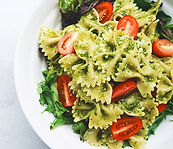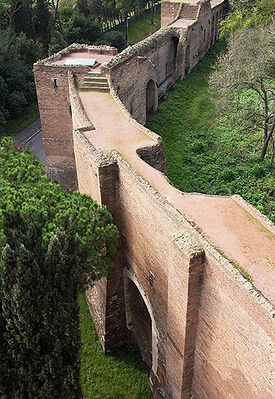

Urban Renaissance: Testaccio,
Ostiense and Garbatella districts
Something enjoyable and exciting and unexpected
Our favourites tours in Testaccio, Ostiense and Garbatella districts.
Further information about these tours:
-
English, Italian, Spanish, French, Arabic, Portuguese, Korean, Russian and German languages
-
Solo Traveller and all age groups (included: family with kids&teen; senior disabled, students and couple travellers).
-
Group Size: private max 10 people and small group max 20 people
-
Tours by: foot and private transportation on request
-
Good to know: wear comfortable and low-heeled shoes. The knees and shoulders should be covered in Sacred places and worship
Rome Map

Testaccio, Ostiense and Garbatella districts Map

Rome on the other side of the wall: Testaccio
and Piramide districs
-
3 hours with our local tour guides.
-
From € 280 for 1 to 4 people. Kids up to 5 years old are free. Attractions tickets are not included.
-
Highlights of this tour: Porta Ostiense (St. Paul Gate), Pyramid of Cestius, Cimitero Acattolico, Macro Testaccio
and Street Art.
-
Timetable: in consultation.
Ostiense and Garbatella tour: go from one surprise to the next
-
3 hours with our local tour guides.
-
From € 280 for 1 to 4 people. Kids up to 5 years old are free. Attraction tickets are not included.
-
Highlights of this tour: Centrale Montemartini Museum, Garbatella distric, Basilica di San Paolo fuori le Mura.
-
Timetable: in consultation.
Ostiense and Testaccio tour: successful combination
of ancient and modern
-
3 hours with our local tour guides.
-
From € 280 for 1 to 4 people. Kids up to 5 years old are free. Attractions tickets are not included.
-
Highlights of this tour: Centrale Montemartini Museum, Porta Ostiense (St. Paul Gate) and Pyramid of Cestius.
-
Timetable: in consultation.
1.
2.
3.
ALTERNATIVE TOURS:
You can combine these tours with a Foodie tours.
This includes a Road-Food-Stops that could be: coffees; pizza+gelato; aperitif and restaurant dinner (at the end of tour). Tour duration will be 1 hour extra.

For families, we're providing the Kids Friendly Tour is designed to suit the needs of children from 6 years up. The tours become a Children's learning and fun experience. Kids and Parents can enjoy educational content together.

Explore Testaccio, Ostiense and Garbatella districts
This destination is intended especially to people who are interested in
the industrial archaeology, modern and contemporary art, Street Art
and it is a chance to experience real everyday life of the local inhabitants.
Behind the Baths of Caracalla, in the south direction along the right bank of the River Tiber, is home to some of Rome's most typical neighbourhoods: Testaccio, Ostiense, Garbatella and San Paolo. It is not the usual circuit for most of Rome's visitors and it does not have the prestigious historic landmarks of the Eternal City center, nor the charm of Trastevere and Ghetto but is filled with incomparable energy, a youthful, festive cultural hub, and an area in full revival. So, this destination is intended especially to people who are interested in the industrial archaeology, modern and contemporary art, Street Art and it is a chance to experience real everyday life of the local inhabitants. Of course, places of worship are no less represented and are some of the attractions that become an absolute must to visit on arrival here such as St Paul's Basilica (It is the third biggest churches of Rome, after San Giovanni in Laterano and St Peter's).


The story of this place begins in the second century B.C., when here, the river port was built to promote the trade of the Roman Empire and this would consequently have been a positive impact on the area developments. From the fifth century BC onwards the history of this place changed, it suffered rapid decline and finally abandon at the time of the barbaric invasions. Then we had to wait a long time, about 1500 years, before to see a new urban development plan for these neighbourhoods.
Today, we can see a positive development and great things have been achieved that can be visited such as the Centrale Montemortini Museum and The Macro Museum. The Centrale Montemartini Museum is a fantastic example of what it can be achieve when the glorious ancient times meet with the fascinating epoch of the industrialisation. All this has given birth to a harmonic contemporary juxtaposition as well as a superb blending of stiles, shapes and materials from the different eras. Today, this former power station becomes the second exhibition centre of the Capitoline Museums. The Centrale Montemartini Museum is a complex, contradictory place that deserves certainly to be visited.


Another important bear witness to the transition from classicism to modernity is certainly the Rome's museum of contemporary art: MACRO Testaccio. It was a Slaughterhouse built between 1888 and 1891 and was considered to be among the most important of industrial buildings. The historic building’s past is still very tangible with 19th century iron frameworks and its monumental and rational architecture. This former slaughterhouse now acts as a unique exhibition space in which the very best artistic expressions of contemporary art will be able to establish themselves in an increasingly determined manner.

For all those who are fascinated by the places that are overflows with history, unique and a little bizarre should not miss the next stops of this journey such as the Cestius Pyramid, the St Paul's Gate framed by the Aurelian Wall, the Non-Catholic Cemetery and the Basilica of St. Paul outside the Walls.

You will undoubtedly be surprised to find a white marble Egyptian-style pyramid (36.4m high x 30m base) located at a very busy junction in this southern district of Roma. I am pleased to introduce the Pyramid of Cestius. It was built in the XII century BC as the Tomb of Caius Cestius, a Roman praetor. Probably you may be wondering why an Egyptian Pyramid is located in one of the most unlikely of places: Rome. In 30 BC, Egypt became a province in the Roman Empire and it is possible that the encounter with the Egyptian pyramids influenced the construction of the Pyramid of Cestius. It should first be pointed out that the Pyramid of Cestius was not the only Egyptian-style pyramid in Rome. There was also another pyramid, located near the Vatican that was destroyed during the 16th century in order to reuse the marble to build the St. Peter’s Basilica.

A few steps from here there is another place so enchanting and so suggestive as the Cimitero Acattolico ("Non-Catholic Cemetery") of Rome. The cemetery is tucked away behind high stone walls in the Testaccio district, it is a verdant oasis of peace where you can wander through a series of pathways surrounded by pomegranate trees, cypress, violets, myrtle plants as well as lichen-covered headstones and ornate tombs that carrying some fascinating and thrilling stories of people that ended up here. Many of them were writers, painters, sculptors, historians, archaeologists, diplomats, scientists, architects and poets, of all nationalities and religions (non-Catholic, of course!) such us the English poets John Keats (has an unnamed grave, engraved at his request with the words “Here lies One Whose Name was writ in Water”) and Percy Bysshe Shelley; Italian political thinker Antonio Gramsci; William Wetmore Story (American sculptor, buried beside his wife, Emelyn Story, under his own Angel of Grief memorial statue). Approximately 4000 people lie buried here from 1716 and, with its 300 years of history, it is one of the oldest burial grounds in continuous use in Europe. This cemetery is also known as the "Englishmen's Cemetery" because of the first Protestants that were buried in the cemetery came from United Kingdom.

Three hundred years after the construction of the Pyramid, it was incorporated into the city walls built between 272 and 279 on the initiative of the Emperor Aurelian. The Aurelian Walls was 18 km long enclosed all Seven Hills of Rome and had about 383 towers. Some parts of the wall survived almost intact to our days. St. Paul's Gate (Porta San Paolo, in Italian) is one of the best kept gates of the Aurelian Walls. The original name of the gate was Porta Ostenis whose name derives from The Via Ostiensis (Italian: via Ostiense), which led from this gate, joining the town with the ancient harbour of Ostia. Now is known by the name of the neighbouring basilica "San Paolo", so is called the St Paul gate. Today the gate houses the Museum of the Via Ostiense, where you can see the model of the town of Ostia and the one of the harbour of Rome, and also artefacts, inscriptions and frescos discovered during the excavations at Via Ostiense.
From here, we will cross the characteristic and historic neighbourhood called Garbatella to the beautiful Basilica of St. Paul. Before telling you about the St. Paul, I would just like to say a word about the Garbatella district. Lose yourself in the eclectic Garbatella and admire the unique urban design centred on the English “garden city” model. Small blocks of houses are built to encircle a shared garden and the focus from different architects throughout the years has produced a variety of converging styles, from Medieval and Renaissance to Baroque. The Garbatella also shows evident signs of Futurist architecture and this because it was built in the 1920s to house the people of the working classes displaced by Mussolini’s demolitions in the city centre. The Garbatella's urban architecture has fostered the development of the sense of neighbourhood and local community, its inhabitants feels like in a small independent town, even though it’s only a few minutes from Rome city centre. Today, this district is gaining a reputation as a culinary hot spot, with a good mix of traditional trattorias and modern gastronomically inventive restaurants.

So, have you already put these tours on your "MUST DO" list?
Proceeding down via Ostiense, the road that linked ancient Rome with the sea, we finally arrive at the Basilica of St. Paul's Outside the Walls, the last stop of our itinerary. St. Paul Outside the Walls was built in the fourth century on top of the site where St. Paul was buried. Of the original church only remain the triumphal arch, mosaics, and part of the apse. It got reconstructed and modified up several times until the nineteenth century. I won't dwell too much on the magnificent interior of St. Paul with its enormous marble columns and beautiful gold mosaics, astonishing atrium and charming cloister. It was other details that grabbed my attention and I would like to share with you such as the images of all the Popes right above the top of the columns, which really expresses the sense of the longevity of the Papacy. Secondly, I would like to emphasise the facade of the Basilica covered by an enormous golden mosaic built between 1854 and 1874, which reflects the rays of sunlight and everything is bathed in majestically subdued lighting. Lastly - and not by accident - the Basilica of St. Paul has been included in the list of UNESCO World Heritage site.
